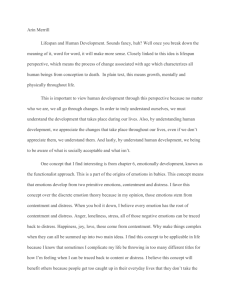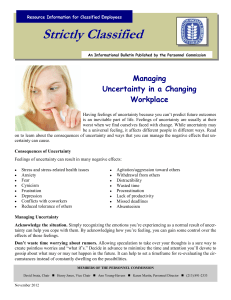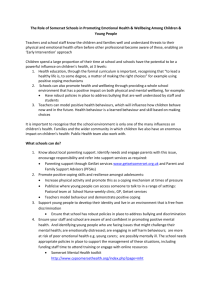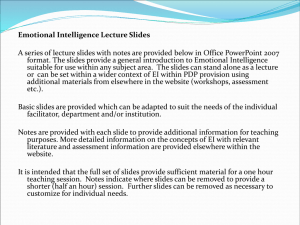Employees: Responding to Change
advertisement
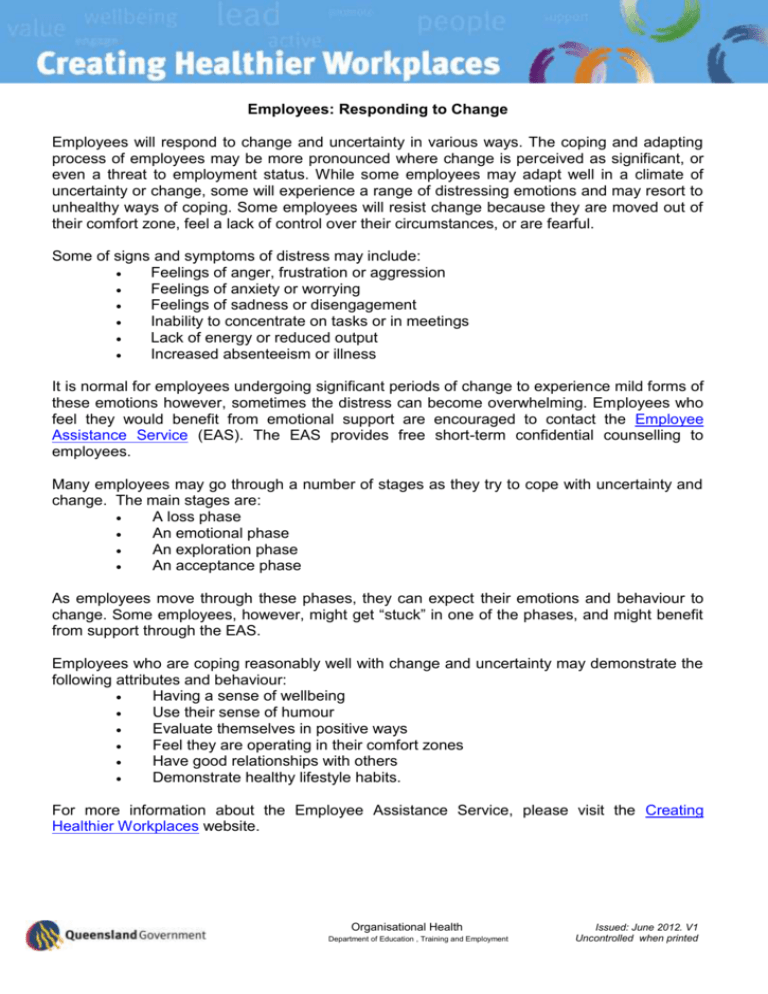
Employees: Responding to Change Employees will respond to change and uncertainty in various ways. The coping and adapting process of employees may be more pronounced where change is perceived as significant, or even a threat to employment status. While some employees may adapt well in a climate of uncertainty or change, some will experience a range of distressing emotions and may resort to unhealthy ways of coping. Some employees will resist change because they are moved out of their comfort zone, feel a lack of control over their circumstances, or are fearful. Some of signs and symptoms of distress may include: Feelings of anger, frustration or aggression Feelings of anxiety or worrying Feelings of sadness or disengagement Inability to concentrate on tasks or in meetings Lack of energy or reduced output Increased absenteeism or illness It is normal for employees undergoing significant periods of change to experience mild forms of these emotions however, sometimes the distress can become overwhelming. Employees who feel they would benefit from emotional support are encouraged to contact the Employee Assistance Service (EAS). The EAS provides free short-term confidential counselling to employees. Many employees may go through a number of stages as they try to cope with uncertainty and change. The main stages are: A loss phase An emotional phase An exploration phase An acceptance phase As employees move through these phases, they can expect their emotions and behaviour to change. Some employees, however, might get “stuck” in one of the phases, and might benefit from support through the EAS. Employees who are coping reasonably well with change and uncertainty may demonstrate the following attributes and behaviour: Having a sense of wellbeing Use their sense of humour Evaluate themselves in positive ways Feel they are operating in their comfort zones Have good relationships with others Demonstrate healthy lifestyle habits. For more information about the Employee Assistance Service, please visit the Creating Healthier Workplaces website. Organisational Health Department of Education , Training and Employment Issued: June 2012. V1 Uncontrolled when printed

